 |
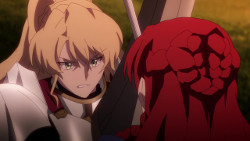 |
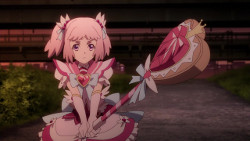 |
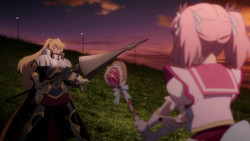 |
 |
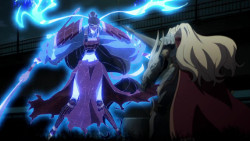 |
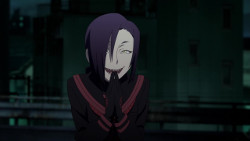 |
 |
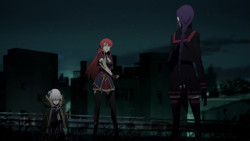 |
 |
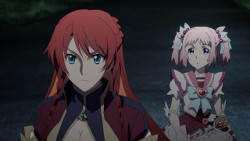 |
 |
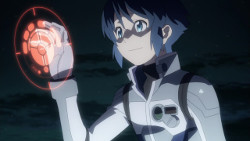 |
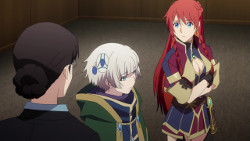 |
 |
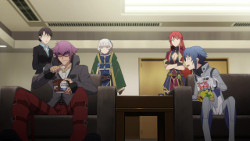 |
 |
 |
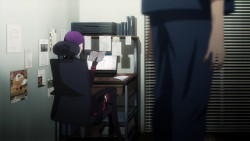 |
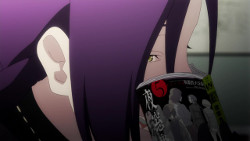 |
 |
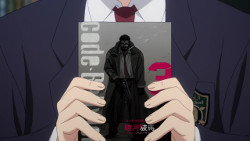 |
 |
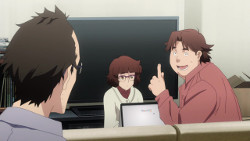 |
 |
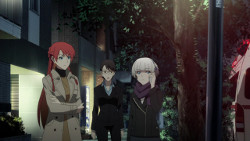 |
 |
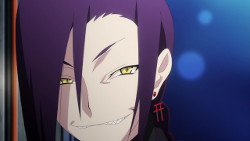 |
 |
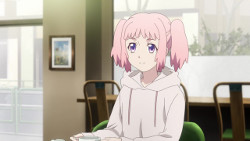 |
 |
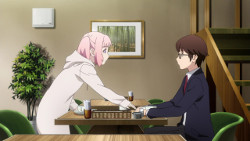 |
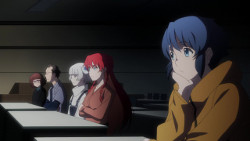 |
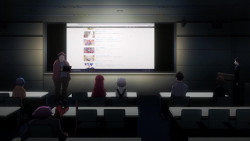 |
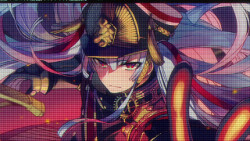 |
 |
「世界の小さな終末 I don’t want to make a mistake for the sake of the people who are in my story.」 (Sekai no Chiisana Shuumatsu)
“A Small Armageddon I don’t want to make a mistake for the sake of the people who are in my story.”
Well hot damn, I dare say Re:Creators has picked up. As if reading our minds for the past two weeks, the show decided to verify several hypotheses and confirm characters—and their secret agendas—are not at all what they appear to be. Personalities? Allegiances? The very purpose of being? All up in the air as Gunpuku’s—well, Altair’s now—plot now acquires a sinister tone. While a lot of these ideas were arguably inevitable, it does not take away from the suspense not knowing just what our military princess has planned.
What really gets me giddy about Re:Creators so far is knowing our two sides are actually three. The resist Gunpuku and assist Gunpuku factions are largely clear cut—for now—but Magane throws a demonic wrench into that solidifying division. Miss shark teeth is out only for herself, unconcerned over collateral damage, and if the “Miracle Great Emperor” plan is any indication, has obvious designs for the real world. It’s basically the antagonistic counterweight to Altair—as Yuuya is proving for the good guys—where Magane likely wants simple control/power, while Altair desires…something else. Wanton destruction, world resetting? It’s unclear just what Altair’s hidden agenda is, but Mamika’s reveal—and Souta’s remarks—hint towards much pain and suffering. I’m quite curious seeing how Magane and Altair interact, because if Magane does have godly desires and Altair seeks apocalypse, both girls’ objectives counteract the other and force them into conflict. Hard being the Emperor with no world to rule after all. We definitely have not seen the full extent of the battle just yet.
Not helping Altair’s cause either is the Mamika issue. I honestly expected Alice to break before Mamika defected, but that idea appears destined for later. Mamika’s policing this week positions her as a sort of true neutral, potentially wanting the change Alice seeks—because rainbows, butterflies, and all that—but unwilling to acquiesce if brought about through violence. It’s the sort of act which will grow increasingly difficult to maintain, because Alice is still winding up for a serious crisis of confidence later on, and Blitz will certainly not tolerate further interference. Mamika will eventually have to choose a side in the fight. If the Magane stalking is any indication, however, our Magical Slayer may not even get the chance. Breaking—or outright killing—cuties is nothing new for anime, but offing Mamika Mahoiku-style could catalyze a response necessary to force Altair’s hand, especially if it breaks Alice and moves her into open rebellion. Blitz’s remarks about running out time allude to the possibility, and I think we know about Magane’s inclinations by now. I’m not willing to bet the house on a Mamika death just yet, but it would definitely be one method of introducing Re:Creators’ next arc.
What will likely determine the story’s progression though is the role of Souta. It’s effectively confirmed our “narrator” is involved in Altair’s creation, although how remains a stubborn question. Personally I still pin him as the artist because his drawing blockage and Altair’s deference to Setsuna’s memory indicates our mystery girl penned the character and her story. The critical part then is how Setsuna came to kill herself as that will answer Altair’s hatred and why Souta blames himself. Souta could easily be a fan artist whose interpretation of Altair became more popular than Setsuna’s for example, or the original artist whose artwork led to harsh criticism of Setsuna for some reason. This answer holds the key to a lot of Re:Creators’ mysteries, and since the Metchin Meteora Defense Force now knows Altair’s identity, the reveal should not be long forthcoming. Souta cannot keep his role hidden much longer, especially with Magane’s undivided attention. I have no idea what next week will bring, but you can be sure it’s going to be wild.

Bro before Hos! XD love the part where Yuuya and Rui bonded really quickly. They act like they’ve been best friends for life XD. (based from how Yuuya described his hidden back story he’s prolly the frenemy or jerk with a heart of gold type)
Am still on the theory that Souta designed Altair’s basic draft and backstory, while Setsuna did the art and further enhanced her. It’s odd for an artist not to recognize an artwork he’s done before at glance.
Can’t wait for next week XD
I’m fully expecting a dual Yuuya-Rui mecha beat down on Blitz sometime soon. Anything else will be disappointing 😛
And gah you’re probably right on Souta, I keep forgetting his ignorance at first seeing Altair. Still betting he did not have a big hand in her story though, it would likely make the explanation for Setsuna’s death more confusing.
Am guessing Altair is prolly an abandoned character that Souta created for his story, that Setsuna then picked up and continued building up and when Setsuna released her version of the story, she got trolled into suicide. (would explain why Altair only considers Setsuna her creator, though recognizes Souta)
Would explain why Souta’s artist block and why he is so hesitant to show his work to others (as most aspiring artists would leap at the chance of getting feedback from Pros)
also, dont you love Selestia facepalm at sight of those 2 fanboying each other’s cool factor?
Can’t believe I’m saying this, but I’m hoping Mamika won’t get offed– at least, not this early (Re:Creators is 2-cour, right?) Magane definitely has cause to end her, though, considering Mamika’s probably the one with the most power to stop fights from happening.
And we still have no idea what Altair’s objective, or where she is and what she is doing.
One thing I did enjoy seeing: Kanoya’s entrance and how everyone high-tailed it as soon as the giant mech dropped in! I could just see the giant NOPE! on Alice’s face!
Creators is 22 episodes long.
I think it’s 50/50 whether Mamika dies anytime soon, she definitely has the death flag, but it’s not clear if Magane wants that. Looks to me like shark teeth simply wants some entertainment, and there’s nothing more entertaining than a traumatized cutie. Unless you’re Yuuya of course lol, no idea why he wants to fight Blitz so much.
Beedle… If you have noticed… The shadow of the Urobutcher has made its presence felt recently. You think Mamika is save? Even the second coming of KamiMadoka is not enough to overturn her fate.
https://randomc.net/image/Re%20Creators/Re%20Creators%20-%2007%20-%2034.jpg
Creators has been very willing to break with cliches – normally the others would’ve only found out about Altair once Souta told them (after keeping quiet about it for half the season), but here Nakanogawa’s discovered her existence by his own effort.
Of course, only Souta can reveal what happened between him and Setsuna.
https://randomc.net/image/Re%20Creators/Re%20Creators%20-%2007%20-%2029.jpg
Cafe Ufotable’s still operating down in Tokyo’s Nakano district (Nagata Building, 1-38-11 Nogata, Nakano).
They seem to be doing Zestiria and Touken Ranbu themed stuff for now.
http://www.ufotable.com/cafe/
https://randomc.net/image/Re%20Creators/Re%20Creators%20-%2007%20-%20Large%2016.jpg
Metchin shouldve join the bros lil eating party here instead of getting annoyed with Yuya
https://randomc.net/image/Re%20Creators/Re%20Creators%20-%2007%20-%20Large%2027.jpg
Mamijou is indeed redeemed and climbed herself up to best-girl ladder in a row now.
Good episode this week (everyone is doing deep discussions about this anime’s mysteries recently so imma just gonna take my seat and enjoy the useless details now)
It still irritates me how Selestia remains in the defensive role without her Vilkiss. She and Metchin definitely bonded so well and its like theyre always together XD
https://randomc.net/image/Re%20Creators/Re%20Creators%20-%2007%20-%20Large%2034.jpg
See the gaps between their chairs
Magane definitely managed to trigger the fear in me at the end of this episode. I didnt expect her to be spying Mamika and Souta in the cafe man urgh. I smell bad news. I hope either Alice or Gunpuku/Altair show up in case Magane trying to pull anything devious. This girl is unpredictable.
https://randomc.net/image/Re%20Creators/Re%20Creators%20-%2007%20-%20Large%2003.jpg
that damn cash-item player!
So all the major players from the OP are assembled now… which is actually kinda interesting, since that makes me wonder if there aren’t going to be any more Creations dragged into reality. From what little we know you’d think sheer quantity of Creations would be what Altair would one to more rapidly distort the world, but if that doesn’t happen then there has to be some sort of particularity why she and the 8 other Creations are all that are required for her plan.
On one hand I would expect Sota to be critical to the plan (as the end goal surely has something to do with Setsuna, possibly reviving her or something), but then I remember that in episode 1 Altair was legitimately surprised when Sota was pulled into Vogelchevaliar. It’s probably safe to assume that Sota feels guilty over Setsuna’s suicide and that’s what’s causing his artist’s block, but Altair simply wanted revenge on Sota for that she’s had plenty of opportunity already. It’s quite a puzzle still between Sota and Altair, and I doubt it’s going to be solved any time soon with plenty more episodes to go.
Yep, all eight main characters, for the most part, are on the show. Sota does not even rate a picture on the promo poster or the still shot at the end of the OP which also does not feature him. The more I look at the Japanise Promo materials or website combined with what is happening on the show the more I think the creations are the drivers of this story. This is an alien visit Earth tale featuring the aliens with Sota the narrator.
Masaaki’s pointed out to an interesting theory. Until now, we only had Yuuya’s hypothesis about “popularity power” being the reason certain characters were summoned. But Masaaki suggested that, as far as they know, it could all be Gunpuku’s doing and that perhaps those characters were the ones who impressed her creator, not the world in general. Which also explains why we only have anime and manga creations, and not Mickey Mouse or Batman lookalikes invading the world.
Of course, can Meteora’s End of the World scenario happen with such a small cast of creations? Or perhaps she misjudged Gunpuku’s real plan?
I think it is more that their characters are not defined by their creators but by how the public views them. Sure they are critical for the character to exist initially but they are not really required after that. Having the writers do interviews or make official posts on official sites is probably a better test than trying to draw them in action in private. (This is why killing the author is a bad idea if a creation wanted to quickly alter themselves, although the government can easily alter the public’s perception)
Example: Having a suicidal writer commit suicide and all her audience mostly trolling her would probably make for a very negative creation.
Having a magical girl be pretty dumb is also probably a side effect of the world’s perception of magical girl shows.
And so on and so forth. Likely no writer/artist/creation can re-write their characters without some good fraction of the public accepting the change.
That is a good point, and provides a link with Yuuya’s “popularity power” theory. That said, I think even the public isn’t enough, or at least it may not be the only key. It was revealed that this Selesia doesn’t know about events that haven’t been covered by the anime but have been published in the novels, thus are part of public awareness of the character.
The interesting thing about that theory, is that it would make it impossible for the creators to alter their creations. Any change they make now will not happen as the one person that needs to know of it is already dead. Amusingly it has not been disapproved.
Though it does raise the question on why Gunpuku (Altair) convinces Alice otherwise. What does she have to gain in having Alice obsess with her creator?
@theirs
Indeed, it’s very interesting that such a theory fits the current situation, isn’t it? If it’s true, it would explain:
-Why authors can’t change the characters who appeared in our world.
-Why those characters were summoned and not others.
-Why Selesia doesn’t know of the events that happened in her latest novel.
Still, I can’t rule out Souta’s initial idea that characters can come from different versions of the same source material.
@theirs
Altair’s lying to Alice makes sense if it’s to get Alice doing her bidding. It’s cheap and convenient deception which keeps Alice chasing a goal few know to be impossible (or very hard at best). The important question is what Altair gains from all the chaos.
As for theories personally I’m leaning to the multiverse idea, where the creator can induce changes, but not on characters already in the real world. The current Celestia thus lacks knowledge of later events because she was materialized before those changes occurred later on. Likewise any ability changes would only emerge if the character came “alive” after the changes were written in. There’s probably a way to induce changes on those characters already here, but I have a feeling that’s destined for later on in the show.
I love this, it is rare to see a true ensemble drama with character after character taking the protagonist role as the plot demands. I love the defied convention of “the hidden secret it to emotional to tell” being bypassed mostly in one episode.
I like the characters developing and changing. Characters also revealing things that were thought of by the authors but not included in the story as well.
I wonder the end game, these characters will be different from their experance. Meteora is from a completed prodject how does she even go back to a story that has ended?
I quite like Meteora, she has acted like the NPC type she was but is adapting. I do not know how the critics would write a story to cover the ideas she conveyed in smaller doses without basically a lot of filler fights and other activities to break up the talking over a much greater number of episodes as a lot of her stuff cannot be easily shown. And for Meteora to be who she was in her story she had to be talky at least at the start.
World Building to me has been great although lots of mysteries remain. I am no expert but have been consuming fantasy and sci fi for 45 years roughly. Like many terms though what others think the term World Building means could be different.
Oh, it’s not so difficult as it sounds. In fact, the last couple of episodes are good examples of how to do it right… or at least, how not do it wrong.
Instead of
Deus Ex Meteoraa single character hogging exposition-time with preaching monologues that are the sole focus of the scene, in this episode alone we have different characters contribute with different bits of information, from Yuuya’s “us Creations can change too” statement to Masaaki’s “alternatives to popularity power?” ideas and “I found her!” moment. In every case, instead of talking and talking on their own for a long time, it’s always brief and part of a dialogue.Also, and contrary to Deus Ex Meteora’s greatest narrative sin so far (the ass-pull “I somehow infered that Gunpuku wants creations to cause cracks in reality and reset the world, although I don’t have the slightest evidence about it”), it wasn’t a case of “convenient sudden knowledge”, but we see the process behind it, like how Masaaki, Takashi and Marine had been trying to find out more about Gunpuku on their own, even if at first they only had false leads and mere hypothesis lampshaded as such.
Or take Magane’s introduction in episode 6. But of that I’ll write more later.
Good point. Actually, as far as we know, characters haven’t disappeared from their original sources. They’ve just been materialized as avatars in our world. Can they actually go back? Or would that be killing them? And what happens, like Magane’s case now, when the author dies before finishing the story?
Given they still exist in the story even if they die here they are still technically alive in their respective stories provided earth still exists to provide the perception that their story exists. The same reality pulling magic could just make them again.
Of course their memories/experiences would be lost which is a form of death in a sense. The author dying isn’t catastrophic as other authors (if accepted) can carry on the work. True death would be the writers writing a definite death ending and having the whole story line conclude in a manner no one can continue with. But even then plenty of writers do ass-pulls later to revive stories so nothing is certain given it is all fictional.
For their fictional worlds to really really die they have to become so unpopular not enough people remember it anymore and it fades out of existence. Alternatively you could just blow up reality and that would do it really fast to everyone and every fictional world.
These words make me wonder… what if this is what motivates the Military Uniform Princess? The efar that, just as the world forgot her creator, she is going to be forgotten too and fade into nothingness? It would explain why she wants this world destroyed. If she’s going to disappear, take all those bastard “gods” with you.
Hmm that might actually explain her haste too. Blitz at least indicates time is a growing concern, and if Altair is destined for nothingness, it certainly puts a spin on things. If true though, I’d bet Altair doesn’t want world destruction, but rather to rewrite the world so she is remembered. It could explain why she’s having Alice and others seek out their creators, Altair is feeling out the boundaries preventing such alteration.
So Pancakes, you’re thinking this is a Blade Runner-esque story where Altair is fighting to try to ensure her own survival. Perhaps, that is how Sota gets over his block and creates a world of his own in the end.
It could be, although I think Altair never planned on Souta being involved in her plan given her showcased reactions so far. I guess we shall find out what the princess has in store next week, at least if the hints are anything to go by 😛
I won’t say much, but what I will say is this: At times, a narrative’s universal morphology may indeed structurally mandate the copious use of generally ineffective narrative techniques (such as the “omniscient didact” and “deus ex machina”). This does not excuse weak storytelling, however. Dull, inane narrative techniques do not magically become interesting or inspired simply because their use is required by universal narrative morphology. If anything, the fact that a narrative’s universal morphology forces the heavy use of such inane techniques speaks to the inherent inferiority of the overarching tale. In other words, if the story you’re trying to tell literally mandates mediocrity, it’s time to scrap it and go back to the drawing board.
Not that this is the case with Re:Creators. As Mistic said, it would’ve been awfully easy to do all that exposition in a different, more effective way. Which actually makes it worse, because the writers’ inability to get it right for five successive episodes is a clear demonstration of abject incompetence…
You are making an assumption that overwhelmingly Meteora dialog was not interesting, except for episode 4 this show Anime list ratings are a steady over 60% 5 and 20% 4 and episode 4 40%, I would be one of them, still gave it a 5 and 23% a 4, 22% a 3 leaving a 13% negative.
Deus ex machina traditionally applies only to the climax of the story there are other terms to complain about things one thinks unjustified earlier in a story i dislike when a term goes buzz word and starts being tagged to everything. Here we don’t even know how accurate Meteora’s information is.
There are more that one story telling style, and what you consider poor techniques to some are great techniques in the type of story they like. I would agree for the standard action story your distain for exposition is a good one. But I have run into enough entertainment and writing types at University that consider almost all fantasy and sci-fi and popular writing junk and actually have in depth arguments why. So I consider this just preferences in the genre and recommend people take options on writing style more by personal preference than a universal rule. I rather hate some of the books that always end up on the 100 best-written books lists and I doubt you love them all either and our opinion does not make them bad writing.
I consider myself one of the elitist geeks who think Legends of the Galactic Hero’s is the best anime series ever made and it has two episodes that I and many love that has fictional future history professors go over past events Public Broadcasting/Nova style 100% exposition, and exposition fills a bunch of the story in other places, after all, it deals with politics and war strategy. I am a major fan of the popular Honor Harrington sci-fi series and love when a character or narrator goes on and on about some future technology or every tiny detail of space combat. And the Honor series is based off the style of the Hornblower age of sail book series. A lot of the great pre-movies books have huge amounts of description so the reader can envision things happening in an environment they will never see and many like me still enjoy that style and that old style is not bad writing it is just not as popular. Harder SCi-FI by its nature especially in the golden age is exposition heavy.
Here I find that the classical sage character is now disliked in a major way. Is there no place for someone with a knowledge advantage with a magic knowledge item in stories anymore? Kind of ruins the premise of the story if a Meteora type that do exist a lot especially in games like her are left out of a story when it is logical that Military Princess would try to recruit someone exactly like Meteora. To stay true to story concept and world building the writers had to include an exposition character type like Meteora and hope it pays in the long run.
I try to never claim something is poorly written as that infers that anyone else that disagrees is ignorant of writing techniques and making the poor writing claim also calls for one to state their credentials, like Professor of X University, Professional critic for top news organization, Writer of critically acclaimed anime scripts, and so on. I will criticize more specific elements but do try to remember I have bias and others have different tastes. Also, it is really hard to get a writing job in entertainment unless your very good in most cases. Yes, good writers can come up dry, executive meddling ruin things, the collaborative process can lay an egg even if everyone is a top professional no one anywhere close to incompetent. I think the product is good but clearly, others differ.
Reply is below.
So I guess by your standard, Peter Benchley & Carl Gottlieb needed to scrap the iconic scene in Jaws where Robert Shaw (Quint) told the story of his experience during the USS Indianapolis incident which is mostly didactic like Meteora’s. In your case, you prefer a flashback in place of Robert Shaw’s exposition and with that, we would’ve never got one of the most excellent & memorable scenes in movie history. And here’s a fun fact, people already made non-documentary movie(s) about USS Indianapolis incident and its shark victims, and Robert Shaw (Quint)’s exposition/narration still stands as one of the best storytelling of the said event according to many legit movie critics, filmmakers, cinema historians and scholars. In a way, you can compare Quint’s narration with Meteora’s conversation regarding her impression toward her dead creator after she played the game she’s in, how she had to cope with it and how it renewed her resolve. Both are heartfelt and perfectly expressed what the character felt and fleshed them out more to a degree.
The notion of didactic storytelling automatically being lesser than illustrative storytelling itself is questionable at best, and it becomes laughable when someone consider and use that notion as the absolute fact. The fact is: it’s all relative to the execution and the material they’re used in/for. Didactic storytelling can have more impact than illustrative one and, in some cases, it can even be more efficient and precisely to the point. Didactic storytelling is better when it is used on something that’s not directly or majorly impact the main plot and, like Jaws, R:C use it rather well so far. I mean, they still show/illustrate the big events as they happen (eg. fighting, killing, etc) and relegated the lesser events (eg. Meteora playing her game, Meteora’s guess/hypothesis, etc) for the didactic storytelling.
I never said never be didactic when presenting exposition, or even that didactic approaches to exposition should never be employed more than sparingly. Rather, I am asking that such approaches be employed reasonably. Read everything I’ve written carefully, and have the courtesy of employing the Principle of Charity. I swear, we humans are binary creatures that are pathologically unable to understand nuance, everything’s instinctively an absolute.
Re:Creators went off the wall with the didactic expository lectures in its first 5 episodes. Therein, a large quantity of expository information was presented, and the ratio was like 85/15 didactic exposition to illustrative exposition, crammed into those first five episodes in close temporal proximity. The very definition of unreasonable overuse. And I am suggesting that the ideal balance is a hybrid approach of, I don’t know, 65/35 illustrative versus didactic or something. More illustrative heavy with a healthy dose of didacticism to ensure clarity. And if the overarching narrative morphology literally requires a 100/0 ratio of didactic exposition to illustrative exposition, it’s clear that something is really, really wrong; suggesting otherwise outside of certain extremely niche genres is simply laughable.
I literally said the same thing last week or the week before. We’re going in circles, and I’m beating a dead horse. I’m done with this exercise in futility; good day to you, sir…
@Zen
That’s the thing though. In R-C’s case, ‘reasonable’ is relative depends on who you ask (as evident with this show having both vocal detractors & defenders about the exposition). Yet you use that relative measurement as an absolute fact (in your favor) and drop it on this show like the absolute hammer of the gods deeming it as an example of incompetence by its makers when in truth, there are many approach to a story that one can use. In this case, the exposition is plenty but it’s still reasonable because the story needs it. That’s why Shin Godzilla last year was critically praised. It has plenty of exposition and each one of them is important in illustrating what the human characters of the Japanese government have to actually go through to defeat something like Godzilla. Otherwise, people will scream plot holes. Whether or not you enjoy it is up to each person’s taste and tolerance for exposition.
85/15? That’s pretty hyperbolic of you, and your using that hyperbolism to judge this series showed the bias there. Episode 1 alone is more or less wall-to-wall action. That’s already 1/5 of the first 5 episode’s duration in general (which means 80/20 for didactic-free action). Adds other non-didactic events like when Meterora & gang were trying to reach Matsubara, encounter & fight with Mamika + Yuya’s intro & interaction, Selesia’s power-up experiment, Alice kidnapping her creator and confronting Altair about her fruitless effort, Alice’s interaction with Mamika, Rui’s intro with Meteora’s gang and the fight with JSDF and your 85/15 number is even further from the truth.
There’s no motion picture medium that rely on 100% didactic exposition (at least not that I know of). So, you’re only saying the obvious. Nobody ever wanted a motion picture to be 100% didactic and that has never been made AFAIK.
If so, why are you keep repeating your complaints in this R:C thread? R:C has been using its didactic storytelling for the lesser events and keep the important events happening as they are like what you wanted.
Well, I’m merely presenting my counterarguments to your repetitive complaints about R:C. I don’t think it’s futile, but feel free to go if you want to.
@Zen
Hey, Zen, I made some numbers for the exposition in the first episodes. In the first 5, it’s about 46% of all the screentime. If you only take the dialogue heavy 2-5 episodes, it becomes more than half the screentime. Check my last post if you want to see the numbers yourself.
https://randomc.net/image/Re%20Creators/Re%20Creators%20-%2007%20-%2019.jpg
Some Chinese viewers tried translating the computer text that Magane’s creator was writing out before his demise.
http://i.imgur.com/ZZxr0V5.jpg
It apparently details Magane having new powers such as flying and summoning monsters at will. The page mentions her escaping death with her new flying powers and about to get revenge on her story’s MC.
Methinks she forced him to write out new powers for her, and then killed him.
That said, it raises the question if she’ll suffer long-term consequences from killing her creator, since there’s no one to continue writing out her world and story.
Not to mention everyone is going to realise (Or should realise) her power’s weakness that lying in response is all it takes to nullify it. She also doesn’t realise anything about the whole re-writing requires far more than just the writer.
It’s not as if everyone else knows what is enough to change the fictional characters in our world. Or even if it’s possible at all. Magane basically performed the same experiment as Selesia’s creator, with identical results. So she knows exactly as much as our heroes.
As I interpreted that scene, Magane killed her author once she realised that he couldn’t change her. A “you have outlived your usefulness” kind of moment, and she seems to have decided that she doesn’t need any re-writing to fulfill her ambitions: “Changing the impossible through one’s own strength is an act worthy of veneration”.
Except unlike the heroes she doesn’t have the control over the copyright or trademark to herself as that is what the government controls and since she is an established fictional character it would be very hard to make a quick change to herself especially with the author dead.
No trademark/copyright means no books, DMCA take downs. She is even making a whole story that they government could use to instantly neuter her powers by saying her character was actually based off a “real” serial killer hidden from the public but who escaped first killed the bookstore owner in a fit of rage and then the author for “copying” her. Sure it is all a fabrication but who is the general public going to believe the police/media/government or a person claiming to be a fictional character wanting the public to change her fictional definition.
Sure it might not be enough to re-write her character but it would still make it very public knowledge her appearance, look, and what to say if you encounter a crazy person saying this is a lie isn’t it in a very menacing manner.
Doing so would also nullify any attempts a her making a grand lie as everyone will think she is just crazy not lying and they will all just reply with the lie that she is telling the truth to piss her off more.
She said it herself her weakness is annoying and trivial to exploit so if they don’t exploit the fact everyone can figure out her weakness it will be a plothole given they already found her book, author, character. Her power relies on saying a lie that people say is a lie (two lies make a truth) but if people just lie it all breaks down instantly (three lies makes it a lie still). Likewise people saying your just some crazy serial killer makes it not a proper answer. It clearly also requires spoken acknowledgement to work.
@a2222222222
These authorities are a bit more competent and open minded than usual, so outing Magane as some sort of “crazy fan who dresses up as the character of the novels is the culprit behind the murders” could work to chase her.
Still, I would be very careful about assuming the limits of her powers. She didn’t need a big grand lie to summon a Lovecraftian monster, just a small thing about a book. And the same our heroes can research about her, Magane can research about them and others. First thing she did after coming to our world was gathering information about the Cthulhu mythos, and now she might have hit the jackpot with exclusive information about Gunpuku.
I don’t think Magane will suffer too much from her creator’s death, at least no more than Altair is suffering at the moment. We are still missing an important piece of the puzzle, and I’d hazard a guess it revolves around change absent a creator.
Magane gives me the creeps. And I love it. If Deus Ex Meteora from the first 5 episodes remains an example of how not to do exposition, Magane stands as an example of how to do introductions right.
-We don’t need someone to tell us who she is and what she does to know she’s bad news; just have her murder a bookseller in cold blood with her powers.
-Don’t say she’s savvy; just have her notice in a brief comment that her world’s money and attitudes are the same as in the real world (and make her take advantage of it by blending in to the point she can tail other characters).
-We don’t need a label screaming “SEE? She’s doing nefarious research!”; just have her take books about the Cthulhu mythos (and let the audience imagine the possibilities).
-And she sums up in exactly one minute and a half (yes, I counted) the theory about changing worlds throughout the creators (and its failure), that food tastes differently and suggests she has her own theories and plans for the world. All under the reveal of yet another murder.
A villain crazy enough to seek refuge in audacity but pragmatic enough not to get caught? A fan of the Cthulhu mythos? “Miracle Great Emperor” plan? I’m going to enjoy the ride, I think.
As enjoyable as Magane’s part is, it still did one basic cliche sin that even Meteora’s dialogues didn’t do. What, you ask? It’s the fact that Magane was practically talking and spout information directly to the audience. If you watch that part again, it’s clear that Magane was alone (her creator had been dead for some time) and there’s no character for her to talk to when she rambled on about power-ups and making an empire of hers. That’s actually even worse than some of the most cheesy James Bond villains. On the other hand, in all of Meteora’s dialogues, we always saw her talking to other characters that needed the information from her. So she’s actually done it better when it comes to the show’s narrative.
Still, I let that Magane part slide due to one thing, and you should know what it is.
Oh, I know why I let it slide: because Magane was entertaining.
At worst, Magane’s motormouth meant that her villainous monologue was extremely brief and she kept changing topics during it, so the viewer didn’t have to suffer more than the bare minimum. At best, Magane was hyperactive, theatrical, revealed things about herself (but only hints, instead of spilling and describing all the beans), and her chirpy demeanour and self-motivational messages contrasted nicely with the horror of the crime scene. She was a visual rollercoaster. Compare that to Meteora.
Nevertheless, you’re right: it’s still a narrative sin. More proof that the anime crew has difficulties at using the strengths and weaknesses of each medium.
Lenghty expositions and inner thoughts are easier to depict and feel more natural on paper, not on TV. Magane’s monologue was too evidently a verbatim transcript of her thoughts directed at the audience. Sure, as a villain herself, she can use Bond villain clichés without feeling out of place. Still, even now I can see better ways of doing it. For example, write it as if she was pretending to talk to her creator, only to reveal at the very end of the scene that the reason the author didn’t respond was because she had killed him. Bonus points if before the reveal she mocked him for being “the silent type” XD
Pretty close, but I actually let it slide due to the fact that Magane is a fictional animanga villain who still hasn’t totally break away from her OTT character tendency. If you think about it, that’s actually a good enough excuse for the writers to go the cliché way since many animanga characters tend to speak to themselves (and by themselves) as an excuse to tell some details to the audience/readers. If the one who committed the sin was IRL character like Kikuchihara, I’d be far less forgiving.
That’s like comparing a singer and a teacher. Both professions are good for their purposes. One doesn’t necessarily better than the other.
That’s a pretty good alternative. Still, like I said above, Magane’s own nature already provided enough excuse for the writer for this narrative sin (for now).
Very good point. Then, that would mean that the original writer was the one who committed the narrative sin XD
But they both have the same profession and the same purpose: from our meta point of view, Magane and Meteora are characters of the main cast, part of the same setting, the same plot and created by the same anime crew to tell their story. And I compared them under the same meta lense: exposition and the entertainment we can get from it.
Using your analogy, yes, it’s like comparing a singer and a teacher… about who is the best writer in a literature contest. For the jury, only how well they write matters, regardless their jobs.
Not if he intentionally use Magane’s nature for that purpose :p
Not quite. Magane is a villain that who likes to do whatever he wants and cause chaos. Meteora wants to keep the peace and reduce the amounts of fighting and conflict to zero. And that’s only the broad strokes. So, they’re quite different.
I do wonder how they would react when they discover Souta’s link to Altair.
Will he play dumb or properly explain himself? Will they lose trust in him or not?
I don’t think he will play dumb, considering he answered Mamika honestly, I bet he was working through the shock of knowing his friend’s–and his own–creation is directly responsible for the current state of affairs. Souta will probably spill everything once he’s told, and I don’t think there will be any consequences once we find out what happened to Setsuna.
Call me morbid but Ougi is turning out into an interesting and lovable character. She’s really the detached observer in today’s spisode.
Did Souta start saying that Setsuna was his girlfriend?
Heh probably not, more likely that he was Altair’s creator, or one of them 😛
Really wonder what happened to Souta. When he stopped short from telling those three artists about Altair, you can really tell that he isn’t suffering from artist’s block. I think trauma is a more accurate description.
https://randomc.net/image/Re%20Creators/Re%20Creators%20-%2007%20-%2032.jpg
The fact that he can only open after this really points to that.
Besides the main mystery, I really wonder what Blitz’s goal is. He seems to know more than the others. Doesn’t look like the everything must burn type too.
The’d better tell the source of his trauma next episode. Since episode 5 they’ve been hinting at a huge reveal. With the current cliffhanger, it should be now or never.
True. His words at the end of the fight make me believe that, beyond Altair herself, he may be probably the one who knows more about what is going on: “I’ll be seeing you again soon. We don’t have a lot of time left.”
Time for what?
Blitz definitely knows what’s going on, he clearly is in on Altair’s plans and supports whatever the hell she is up to. I’d even go so far as guessing whoever drew Altair’s final military form drew inspiration from Blitz’ universe–explaining their attachment–but we need to know the who and how of Altair’s creation first.
Arguing that Re:Creators’ nigh-wholly didactic approach to presenting central expository information is strong merely because many found it to be “interesting” is overly simplistic, and beside the point. When the presentation of a particular piece of expository information happens to arouse the interest of the audience, it does not occur in a vacuum, it instead occurs as a holistic function every element constituting the work in question. Even if the presentation of said exposition was not particularly strong in an objective sense, the audience may still be extremely “interested” in it, due to the strengths of other elements such animation, characters, music, etc. In an uncontrolled, unbounded, natural narrative ecosystem, “interest” alone is not a meaningful way to gauge the effectiveness of individual constituent elements.
I’d wager that a nigh-entirely didactic approach to presenting central world-building exposition is empirically inferior to more demonstrative/illustrative approaches, especially in an audio/visual medium such as animation. Not that anyone has ever done this, but let’s say that the following experiment is conducted (double-blind):
– The same piece of expository information explaining something important and central about a fictional world is presented multiple times to large, random audience pool(s) in different ways.
– The only difference between each presentation is the approach on a sliding scale, from wholly didactic to wholly demonstrative/illustrative.
– All other factors are controlled constants, such as medium (it’ll be animation, done by the same animation team, with the same budget), length (let’s say one minute), art style, frames per second, etc.
– The expository information presented must have nothing to do with pre-existing works, to prevent any interference by other constituent elements of pre-existing works.
– Ensure that all animation in the one minute is wholly dedicated to presenting the piece of expository information in question; no irrelevant background distractions such a Aqua’s random antics in Konosuba S2 E04.
– No expanding upon the expository information that’s being presented, present the same exact information in every one-minute clip.
– Cap off the experiment with a questionnaire that measures how effective and compelling the audience felt each one minute video clip was, ranked against the others.
I’d bet on exclusively didactic approaches consistently ranking at or near the bottom, and more heavily demonstrative/ illustrative hybrid approaches incorporating some didactic lecturing for clarity frequently coming in on top (though I’m less certain about this). Ironically, I suppose like Meteora, I am basing my arguments on an unverified hypothesis. But given what I know about human psychology, I think I have a reasonably high chance of being correct, so for now, I will operate on that assumption. On the other hand, if someone actually carries out this experiment one day and proves me wrong, I will happily stand corrected…
Seeing how some random numbers were thrown about the amount of exposition in the controversial first 5 episodes, I wondered if I could do the count myself. What I got is clumsy at best, but I suppose it’s better than nothing.
WARNING!: This isn’t a reliable account. I basically rewatched the episodes and started counting. My definition of what “exposition” is may not be shared by others. I consider it any instance where characters explain information about themselves, their setting, feelings, plans, declaration of intentions, summaries of the events, predictions, theories and philosophies. I DIDN’T count any dialogue outside that definition.
Show Spoiler ▼
Yes, I know, I was very bored.
Ratio of didactic to illustrative exposition was clearly hugely skewed in favor of didactic. I have no idea what that fellow above was talking about estimating the what seems to be exposition over total runtime. That’s not myvpoint which was o ly regarding time spent on exposition. I would cry strawman, but Hanlon’s razor, right? Which is incidentally also whu i’m not entertaining it…
*(“that fellow” as in Oby)* Nice stats though, Mistic! If anything, those stats seem to suggest expository oversaturation in general, even before we get to the issue i was talking about which was oversaturation of didsctic exposition withim runtime dedicated to expositionn…
If anything we might need to refine the argument towards the positioning of the exposition. An hour worth of dull explanations over a 22 hour run time is nothing, but concentrating it within a ~5 hour period–and at the show’s beginning at that–makes the annoyance explicitly felt.
IMO I think your estimate Mistic highlights how several of us are correct–notably Zen–that breaking up Meteora’s monologues and introducing the ideas during action (i.e. visually instead of verbally) would have significantly improved Re:Creators’ introduction and eliminated a lot of the debate brewing these past few weeks. It makes me wonder though if Hiroe Rei doesn’t have a larger story in mind, and that he felt getting this “needless” background out of the way would allow for more focus on the “juicy” parts of the story. While not taking away the problems Re:Creators’ start had, it could explain why we had such an expository-heavy opening.
It looks like the numbers are still far from your hyperbolic 85/15 between didactic expo & illustrative expo, which still proves you wrong, no matter how much you dismiss and insult me.
Mistic’s stats dont measure didactic/illustrative exposition. Only exposition/total runtime. I maintain that 85/15 is a decent ballpark estimate of the time spent on didactic exposition versus illustrative exposition, out of total runtime spent on exposition only.
Incidentally, yet again misrepresenting the prior statements of others to support your argument…
@Mistic
Thumbs up from me. Your boredom produced something nice and useful, mate. Who knows, I might do the count myself if I have the time.
@Zen
You know, I’m beginning to wonder what your definition of exposition (both Didactic & Illustrative) is. It looks like we’re not on the same page regarding that. In this case, Mistic’s line below might apply:
And what is your example of mystery anime series with a perfect amount of both didactic & illustrative expo?
Here’s the thing though (or two things, to be exact):
1.How do you visualize Meteora’s feelings toward the death of her creator as efficient as her verbal confession?
2.About Meteora’s hypothesis/theory that has no basis, here’s my case:
It’s very possible that the writer intentionally refrained from giving a visual representation in order to not highlight Meteora’s theory further and make it like it’s the truth. After all, it’s still a theory with no basis, and it still has a good chance of being wrong which might as well be the case.
Other than those two, I don’t find other exposition by Meteora that important to the point that it needs its own visual/animated representation. The experiment already visually represented the limit of what creators can do to their creation. What Meteora described to the SSCC panel (aside from her theory), we already see happened in previous episodes. They can save that animation budget for the really important things or the more entertaining things (like Selesia & Meteora eating Japanese food for the first time :p).
Thank you all for your kind words. Well, it seems that afternoon didn’t go to waste after all ^_^;
@Zen
Like Oby, I must admit I need clarification: what do you understand for ‘didactic’ and ‘illustrative’ exposition? I imagined it as ‘didactic’ meaning a character explaining things by talking or using large chunks of text, slides, graphics, etc. Meanwhile, illustrative would be the rest. For example, Meteora explaining his theory about why the new power for Selesia didn’t work would be ‘didactic’, while Selesia’s anticlicmatic failure at using her supposedly new power would be ‘illustrative’. I don’t know if that’s what you were talking about.
In any case, all the exposition I counted was the former kind. The more visual, “show, don’t tell” exposition I didn’t count.
@Pancakes
The numbers are even worse: it’s not almost one hour of talking heads in the first 5 hours, but in the first 5 episodes, that is, less than two hours of anime.
I think so, but that strategy is easier in a novel. Throw a couple of infodump chapters and you can forget about it later without doing too much harm. But what may work in a book doesn’t usually work on TV, and I think that’s the root of most of the problems we have seen so far. Of course, there are exceptions; the Monogatari series is (in)famous for its open embrace of its literary roots and running with it. But it doesn’t seem Re:Creators is going to or even wants to embrace the same route.
@Oby
As someone who decided to watch all of Meteora’s Greatest Hits again (for Science! XD), I can honestly say that the silent scene at the beginning of ep. 4, where she and Marine go to the game company, was more efficient. No words spoken, but we see the surprise of the developers, the distress of Marine and the shock of Meteora in just 20 seconds.
As for the theory, there are many problems with it, of which the lack of visual representation is only one of them.
If the theory is wrong, the series devoted far too many minutes of talking heads to it in two whole episodes. If it’s right, it was first presented to the audience in yet another lengthy speech without warning of foreshadowing. And no matter if it’s right or wrong, it was accepted as a believable and even urgent possibility by all the heroic characters right away, without anyone pointing out that arguments such as the mysterious “forces that try to make things make sense”, “restorarion of power”, “coefficient of elasticity”, etc., or stating that “the world couldn’t make things make sense fast enough” and “everything will be reset” only have Meteora’s word for them.
I’m referring to time spent on conveying worldbuilding-centric information to the audience. What even is “exposition?” By a certain definition, that might even include character introductions, etc. The scope of my analysis is very narrow, concerned with worldbuilding only, characterization and other aspects of the narrative not included. The presentation of information that “fleshes out” a fictional world- defines its rules and form.
The vast majority of the time Re:Creators has spent attempting to do this in its first five episodes has been through on-the-nose, verbal explanations/lectures/discussions, usually led by Meteora (i.e. “didactically”). I wouldn’t even count the event where Selesia failed at activating her supposed new power as fully “illustrative.” The failure itself alone was illustrative; the accompanient explanations and discussions were decidedly didactic, including the build-up through which the experiment was initially formulated. In other words, the vast majority of all runtime dedicated to conveying worldbuilding-centric information to the audience was spent doing so didactically, with very little illustration attempted.
Illustrative world-building, on the other hand, by my definition, would be conveying worldbuilding-centric information through an event, from which the audience can infer the truth of certain facts about a fictional world. For example, to convey the fact that your fictional world is infested with dangerous dragons, instead of having a king say “15 villages have been attacked by dragons this month, leaving thousands dead” you actually show some dragons destroying a village or two, allowing the audience to infer this fact for themselves. Of course, the best approach would be to combine the two and have the king say that after the village destruction scene, or have him narrate it over the village destruction scenes- you can’t actually show all 15 villages getting destroyed after all. Didacticism for clarity. Most narratives need a delicate balance between didactic and illustrative; the proper balance is usually more illustrative-heavy, but it can vary…
By more illustrative heavy, i do not mean like 90/10 illustrative to didactic. I mean more like 65/45 illustrative to didactic. A significant preference for illustration, but not hugely disproportionately so. Too much illustration without enough didacticism is also a problem, because things get confusing fast…
Indeed, my definition is closest to that first idea. I see exposition as a narrative style, rather than the narrower (but also, and up to a point, wider) “worldbuilding only” scope you mention.
I counted all the dialogue-time devoted to explain things about characters, feelings, plans and setting. By definition, all of it was didactic. By decision of the writers, the vast majority of it was worldbuilding. Still, although they overlap in some areas, our approaches are not the same, so now I realize that my data can’t cast more light on the discussion about didactic/illustrative ratios you were having before (I’m almost tempted to start timing again, but… sorry, once was too much).
It’s my impression that the balance depends a lot on media and genres. The exposition style in the first 5 episodes of Re:Creators would feel natural or even commendable in a book. For example, motivated by Magane’s theme, I read “The Call of Cthulhu” and it’s basically a man telling the reader about what others did or said. But it works, because bare words are the weapons of literature, and those who can narrate well can get away with everything.
Perhaps the initial idea for the series was a more literary work? Initial idea or not, however, the more audiovisual it gets, the more the ratios should skew towards illustrative worldbuilding, I think.
Actually, weren’t that part at the beginning and Meteora’s confession used for two different purposes? The first was to describe Meteora’s shock, sadness and her feeling of losing hope. The latter was to describe how she coped with the creator’s death and her impression of him after she played the game. Both completed each other to show the progression of Meteora’s feelings, but they can’t be used to replace each other. So… my question still stands: how do you replace Meteora’s confession with a visualization that’s just as efficient/effective? Showing her playing the game is certainly far from enough.
The theory has a number of problems, yes. But I think lack of visualization is not among them. The theory was already highlighted by the amount of time given to it and how seriously SSCC responded to it and it has been repeated twice in the show IIRC. I don’t think a visualization is needed, at least not until the show treated it as the absolute truth. During the first five episodes, there’s no proof that supported Meteora’s theory, so it wasn’t the absolute truth at that point. For example, see how Attack on Titans plays with flashback clips, maps and routes as the character explains their observations & plans. They can do that because the facts supported them so the makers made visual aids to put them more on the forefront of the main plot. On the other hand, Hiroe might not want to put too much exposure to Meteora’s unfounded theory. Having her verbally explained it to the interested party was enough for the moment.
As for SSCC/JSDF accepting Meteora’s theory as something believable & possible, well 1).Meteora does have experience with Altair & she also has that magic book, and 2).JSDF can’t be too careful. They already saw impossible things happening in their city. So when a good-willed scholar magical fictional character who has experience with the enemy suggested a theory seriously & earnestly, they will listen and take action based on it to a certain degree because, at that point, nothing is impossible.
OK, Mamika meeting Souta in subway was so “cold war spy thriller” that it could have been right from Clancy or Forsyth. I fully expect defection once she ehars details of Altair (sinister) motivation.
Blitz Talker is ironically least talkative of characters. His remark about “not having much time” might mean he’s aware of world-destroying intentions of the Altair. What he does think of them is entirely opaque.
As I suspected, Magane doesnt side with either faction but becomes third force, with obvious designs to become god-emperor of OUR world. The scary thing is with her reality-warping powers she has good chance to succeed…
One amazing thing is how multiple creations characters now are aware they have become free from the plot narrative and can become whoever THEY want.
I also loved how Souta’s secret about altair’s identity was almost overnight bypassed by the search powers of state and google combined.